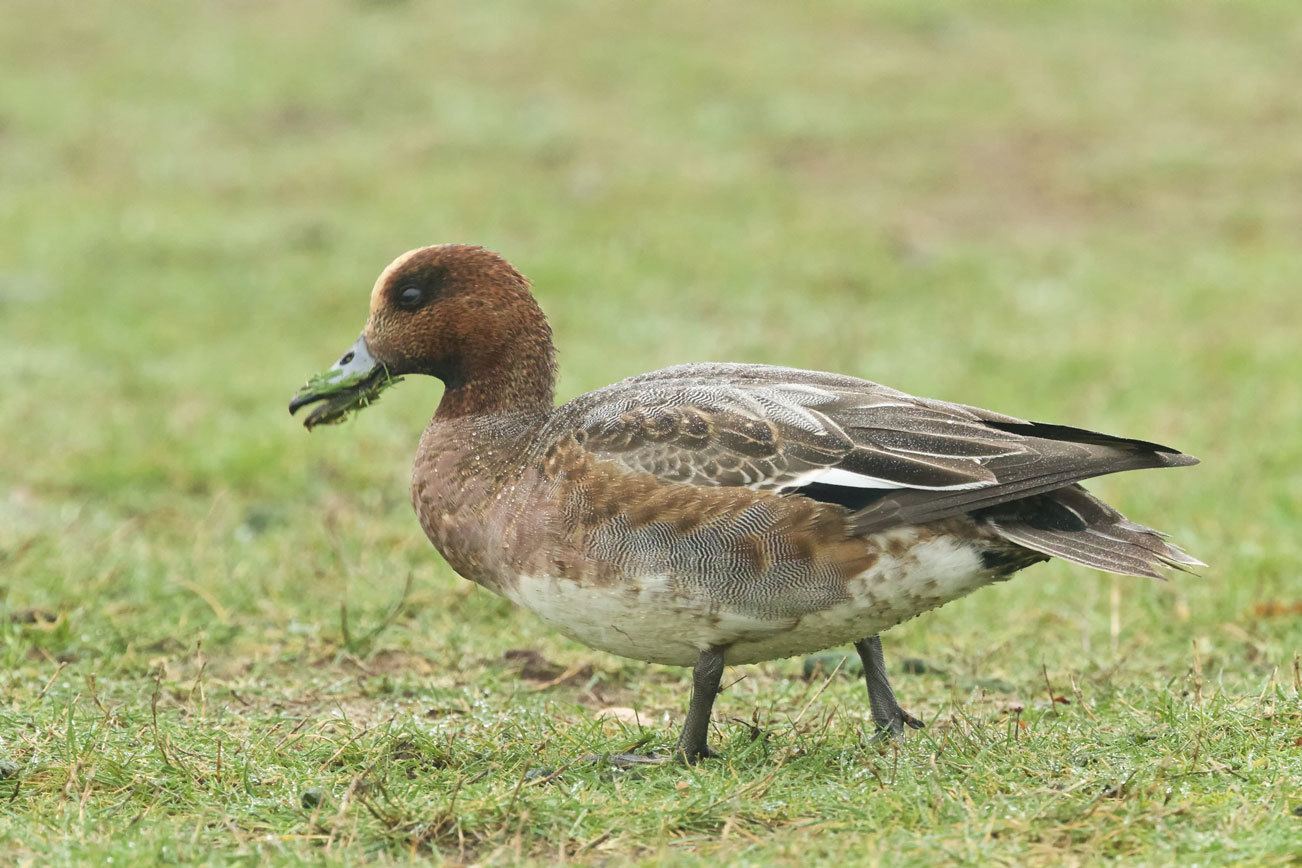When I first moved to Washington state and began going on birding field trips, one of my favorite field trip leaders was a young man named Patrick Sullivan. He taught me to look at every bird in a flock just in case there was a rarity hiding among the more common birds. That is how to find a Eurasian Wigeon hiding among the more common American Wigeons; check each duck closely. That is how Gregg Thompson found this duck.
General Description: The Eurasian Wigeon is now showing up more often; whether a more frequent visitor or more eyes looking for the less common duck, more reports are coming in of sightings of this eastern Siberian visitor. It is a medium-sized duck with a dark rufous head (breeding male), buffy or yellowish vertical forehead stripe, gray back, speckled white belly and a warm russet chest. This photo shows a juvenile female. They are about 16.5 to 20.5 inches in length, with a wing span of 32 inches, and weighing 1.5 pounds.
Habitat: Wigeons can be found in marshes, lakes, bays, and fields, usually in the northern tier of Siberia, Iceland and northern Europe.
Behavior: Eurasian Wigeons are usually found among flocks of American Wigeons and they tend to pick food off the surface of the shallow waters of ponds and marshes or grazing while walking in fields. They also find it beneficial to swim behind coots or dabbling ducks that stir up food in their own feeding.
Diet: Leaves, stems, roots, and seeds make up most of their diet, supplemented by insects in the summer.
Nesting: Eurasian Wigeons have only been known to breed in Europe and Asia…so far. It is likely they are also breeding in North America but have not yet been discovered. They build their nest on the ground under dense vegetation near water. The nest forms a shallow depression of grass and down. The female incubates eight to nine eggs for about 24 to 25 days. Shortly after the young hatch they leave the nest for the water, and are able to find their own food. The female will tend them for another 40 to 45 days until they fledge.
Migration: The Eurasian Wigeon migrates south in winter, as far as southern Asia and Africa. It isn’t known where the North American population goes en mass, but they are found in our state in the winter.
Conservation Status: The number of Eurasian Wigeons in North America has increased, but again, whether because of more people looking or an actual increase just isn’t known.
When and Where to Find in Grays Harbor: Find a flock of American Wigeons and you are now likely to find at least one Eurasian Wigeon. So scan carefully…they are out there.


